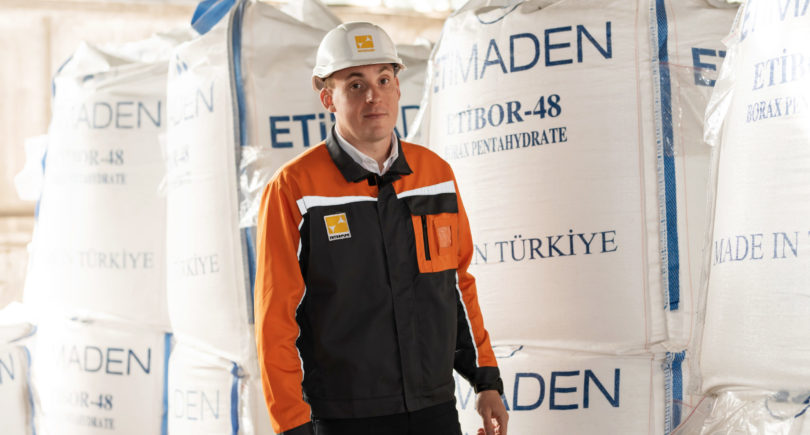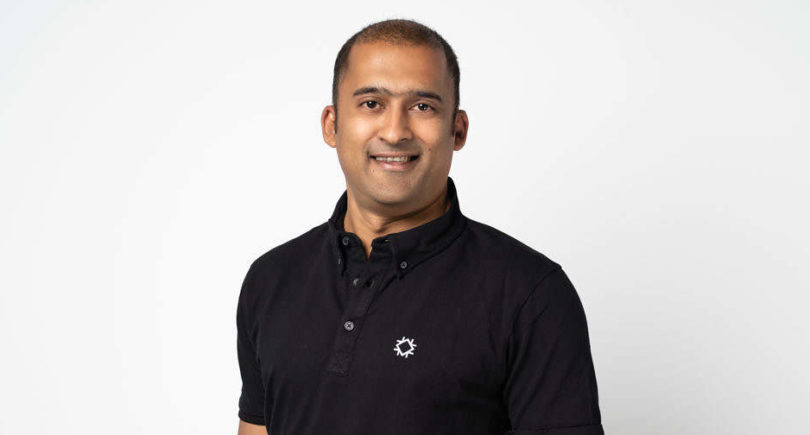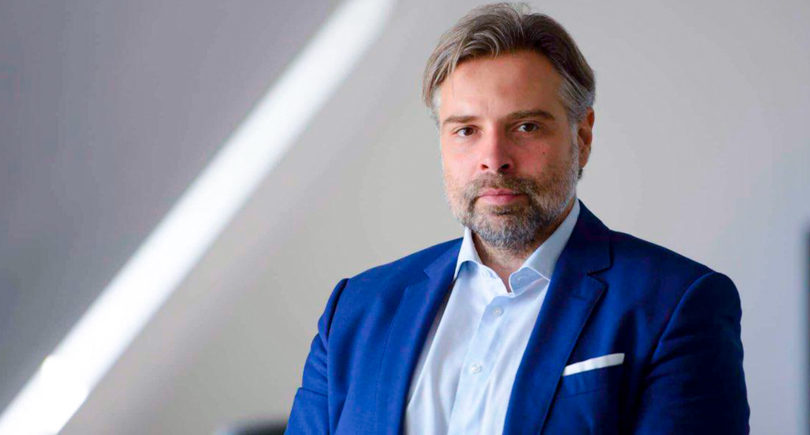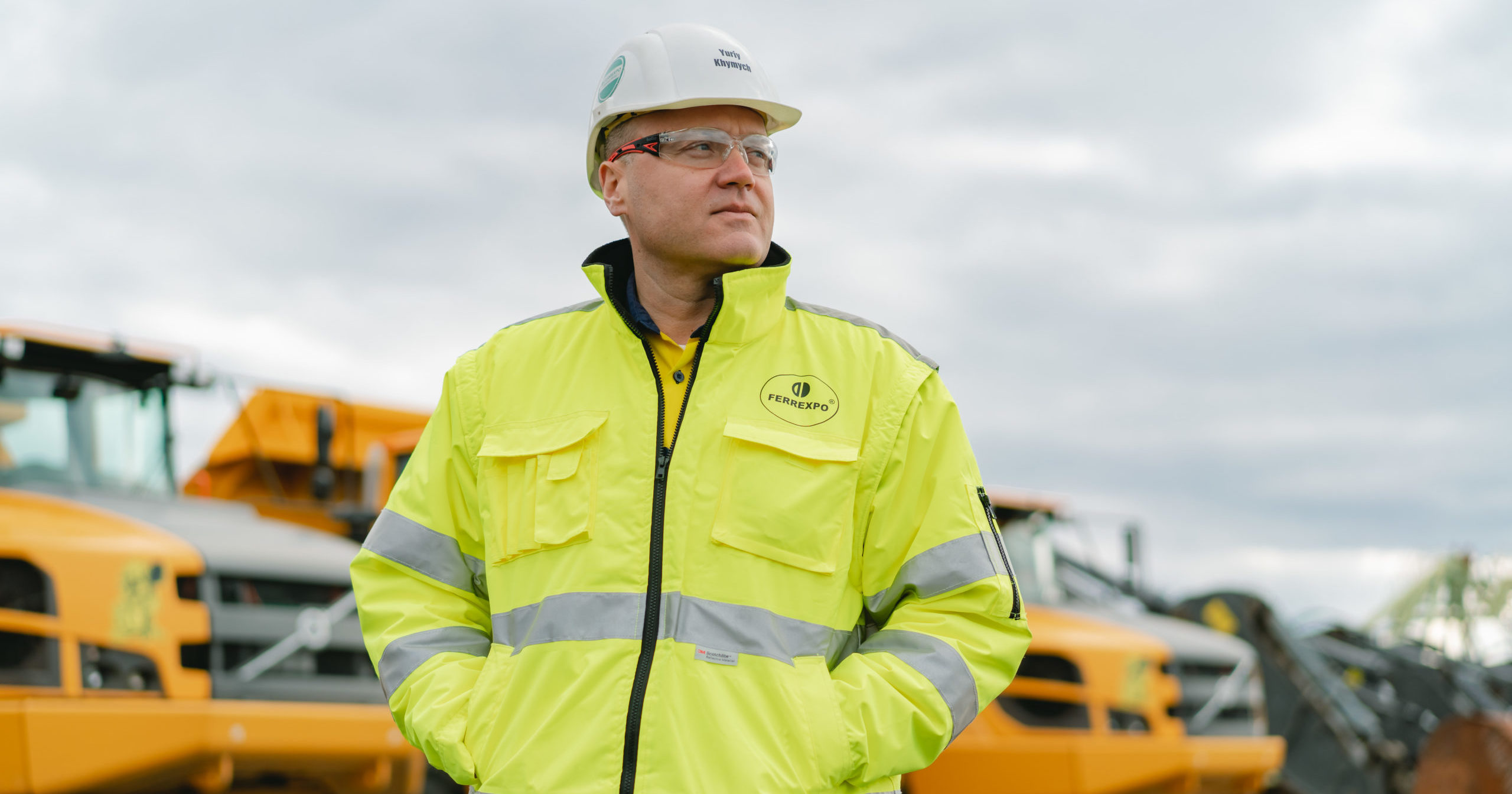
Interviews Ferrexpo 3069 21 February 2024
In 2024, the company is going to actively implement support programs at social infrastructure facilities and in the fields of medicine, education, and sports
Yurii Khymych, General Director of Ferrexpo Belanovo Mining (FBM) and leader of Ferrexpo’s corporate social responsibility projects in Ukraine, spoke about the challenges the company had faced in the first days of the invasion, humanitarian and business projects, and the rules allowing it to remain efficient even under high stress.
At the end of February, it will be two years since the establishment of the Ferrexpo Humanitarian Fund. How do you assess its work?
– In the very first weeks of the full-scale invasion, we provided a lot of support in different areas and across 12 Ukrainian regions. This happened in an uncertain environment, because in the first months people did not fully understand what would happen, especially if the invaders would reach the Poltava region. We worked to both start the Fund in addition to our normal work duties. It was quite difficult, we were literally living in the office at that time.
As for 2023, I can say that it was a difficult year for the company: due to problems in logistics and electricity supply, production volumes and, consequently, revenues decreased, but Ferrexpo still found ways to help. In total, over the two years of war, we have provided over UAH 946.5 million in humanitarian aid.
There is little information about the Fund’s projects. Tell us more about them.
– There are many projects. They cover different areas, each of which is important in its own way. For example, the construction of a shelter in the Novohaleshchynsky Lyceum, the main institution of the same name community in Poltava region. It was this shelter that allowed the school to start a full academic year offline, and thus provide children with the opportunity to receive education and socialise, especially in rural areas where the access to the Internet and PCs is not always available. So now the residents of 20 settlements in this community can be as calm about their children as possible.
The Fund also took an active part in reducing the consequences of flooding and destruction caused by the undermining of the Kakhovka hydroelectric power plant dam in Kherson region. We sent hundreds of tons of food packages to Kharkiv and provided medicines to the affected communities.
We completed the construction of the first stage of the water supply system in the Pryshybska community in Poltava region in December 2023. The development of this project began ten years ago. Design work has also begun on the construction of a water supply system and a sewage pumping station in the Novohaleshchyna community. It is extremely important to provide communities with quality drinking water.
With the launch of the attacks on the country’s energy infrastructure, we started purchasing generators for our communities, which allowed us to ensure backup power for social critical infrastructure facilities such as medical institutions, public utilities, etc.
For mobilised employees, we purchase military uniforms, boots, thermal underwear, and tactical first aid kits. The «Backpack for the Mobilised» project is under development. The state provides uniforms, shoes, helmets, and body armour to the mobilised, but there are many things that go unnoticed. To make one such backpack with all the necessary things, you need at least 20,000 UAH. It will consist of a sleeping bag, a mat, a spoon, a fork, a raincoat, and a first aid kit with the necessary medicines.

Ferrexpo
Have the areas of assistance changed over the two years of war?
– The requests have changed. Initially, it was emergency assistance with basic necessities – food and hygiene products. And in 2023, the focus shifted to arranging bomb shelters, purchasing backup power supplies, etc. A rehabilitation programme for veterans from among the company’s employees has been approved and is currently being implemented. However, we have received many requests for assistance and the arrangement of a rehabilitation center in our community, which will accept all veterans living in the Poltava region. The rehabilitation center will provide physical and psychological rehabilitation. We are currently negotiating the purchase of equipment.
What are your plans for the current year? How has the budget for CSR initiatives changed, given the significant decline in production?
For 2024, the budget for CSR programs was approved at the level of 2023. We are not going to reduce the amount of aid. We are trying to find funds to help communities even under martial law.
Now, tell us about the work in progress. At what stage are stripping operations at the Haleshchynske and Belanovo deposits?
– Before the full-scale invasion, we planned to reach the ore body of the Belanovo deposit in the fourth quarter of 2023. However, in 2021, the National Security and Defense Council revoked one of the special permits, namely for the development of the Haleshchynske deposit. This was unexpected for us, as there were no grounds for such a decision. Previously, we had undergone a comprehensive inspection, including with the participation of representatives of the State Service of Geology and Subsoil, and no significant objections were raised. We have initiated a lawsuit and are currently defending our position in the courts.
At Belanovo deposit, we are not currently conducting stripping works due to limited funding. However, we carry out almost all the work to maintain the terms of the license agreement and the implementation of infrastructure projects.
We use unique equipment for mining operations without filling the rock base of roads, loading sites and dumps as part of the technology implemented for the stripping of the Belanovo deposit. The equipment is located on our property and we are in constant communication with the contractor, who is ready to resume work when the situation is favorable.
We don’t know when we will be able to resume mining operations. We are waiting for the war to end and for the situation with the seaports blockade to be resolved, which will allow us to finance development projects.
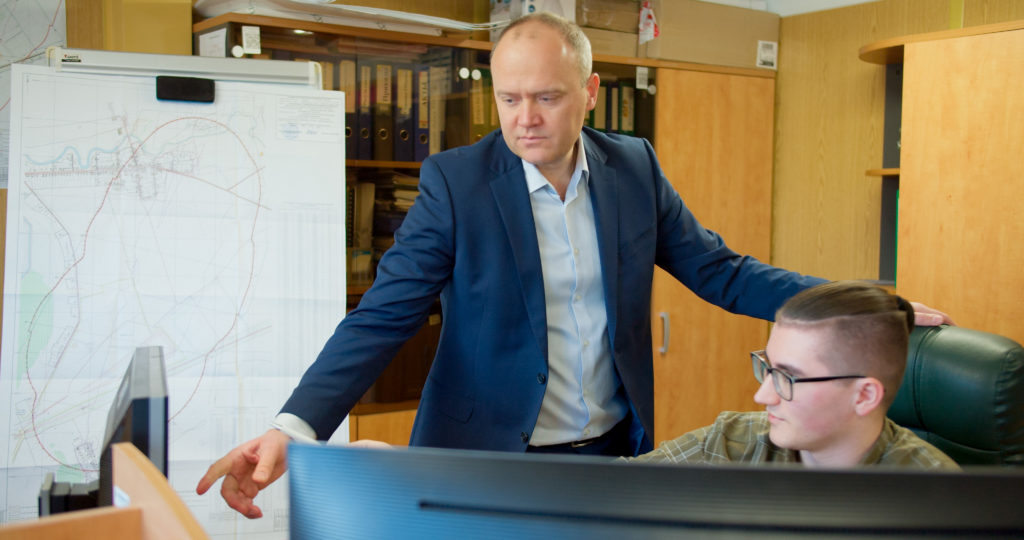
Ferrexpo
What is Ferrexpo Belanovo Mining’s current focus?
– The Belanovo deposit stripping project is part of Ferrexpo’s strategy to raise its production capacity up to 24 million tonnes of iron ore pellets per year, up from the current 12 million tonnes.
This will require some upgrading at the crushing, beneficiation and pelletising plants at Ferrexpo Poltava Mining and further stripping of the Belanovo deposit. Belanova has the potential to supply a large portion of the ore needed in various explansion scenarios.
The Belanovo deposit is one of the largest iron ore deposits in Europe with 1.7 billion tonnes of raw materials, but to deliver the ore mined here to Poltava Mining, there’s a lot of work to do, including the construction of haulage roads and railways, reconstruction of a number of power lines, fiber optic communication lines, and the main gas pipeline between Belanovo and Yeristovo Mining.
We have already received the necessary approvals for most of the works. As of the beginning of February, more than a thousand hectares of land are leased or owned by FBM, and we have already bought another 500 hectares and they are at various stages of registration.
In total, we have enough land to fulfill our 10-year mining and dumping plan. One of the most important issues is the restructuring of the railroad infrastructure of Ukrainian Railways, namely the removal of the Potoky-Nova Haleshchyna section. We are currently in the process of obtaining further approvals from the relevant authorities.
How do you ensure labour safety at Ferrexpo Belanovo Mining?
We have a good safety record at Belanovo. One initiative we initiated last year, was the formation of a volunteer fire brigade. Our employees undergo regular training and have already achieved a response time of less than 10 minutes. In the event of emergencies in the communities bordering FBM, our team will be available to provide support. Of course, we are not in the first line of call and response, but it is an additional element of confidence for the communities, as we are closer to them than Horishni Plavni or Kremenchuk.
Most of our team are members of the volunteer fire brigade, and in general, every employee at FBM undergoes annual training in first aid.
The founding group and owner of Belanovo Mining Ferrexpo speaks of itself as a leader moving Ukraine towards the production of green steel. Do investments in wartime decarbonisation continue?
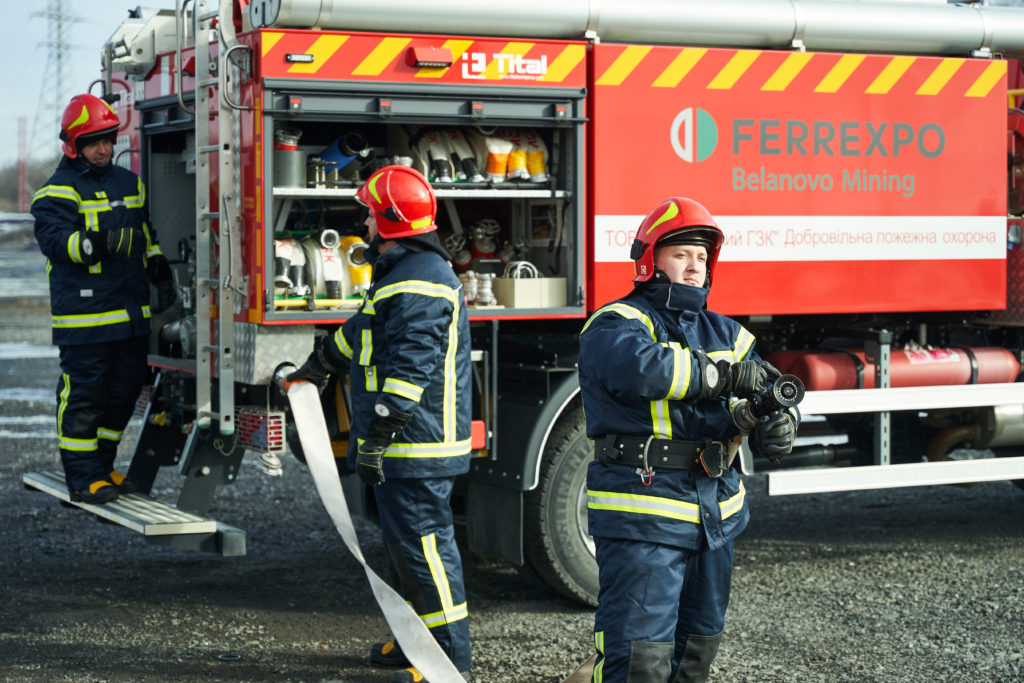
Ferrexpo
Ferrexpo, the group owner of FBM, describes itself as a leader in moving Ukraine towards green steel production. Do you continue to invest in decarbonisation during the war?
The war has slightly adjusted our plans, but our strategy remains unchanged. By the way, last year I headed a team implementing a project to electrify mining fleet at three of the Group’s operations. The first stage has already been completed and the results of research by an Australian consulting company have been received, which recommends consistent electrification measures for all three mines.
This project is linked to our CO2 emissions reduction strategy, which aims to reduce emissions by 50% by 2030 and achieve emissions neutrality by 2050. In particular, we are considering the possibility, for the first time in Ukraine, of using dump trucks with a carrying capacity of 300 tonnes and installing pantographs on haul trucks, which has the potential to significantly reduce emissions.
We are currently analysing the Australian report and have already identified a pilot area for the implementation of the mining fleet electrification project. Ferrexpo specialists are modeling various scenarios. Also, work is underway with ABB to develop a conceptual design and equipment specification for the project.
In general, our consultants recommend electrifying 14 km of mining roads in the open pits of FPM, FYM and FBM, and if the recommendations are fully followed, the expected savings in operating costs over the next 10 years could reach more than $400 million and a reduction in carbon emissions by 526 thousand tonnes – these figures almost completely coincide with the results of Ferrexpo’s modeling performed in 2021.
We have already made a significant step forward and continue to move in this direction.


